Baroque Pearls - Your Ultimate Guide to Choosing the New Nonconformists of Fine Jewelry!

A perfect example of imperfectly perfect is astonishing Baroque pearls in the jewelry world! They are the nonconformists that have twisted the idea of magnificence that was earlier revolving around baseless paragons!
Indeed, these Baroque pearls are setting new benchmarks of beauty with irregular appearance. Each one holds a different design making them more beautiful and exceptional.
Please read this blog to understand more about these Baroque gems and what makes them extraordinary. This guide can help you choose the Baroque pearl jewelry most suitable for your taste.
What are Baroque pearls? How are they formed?
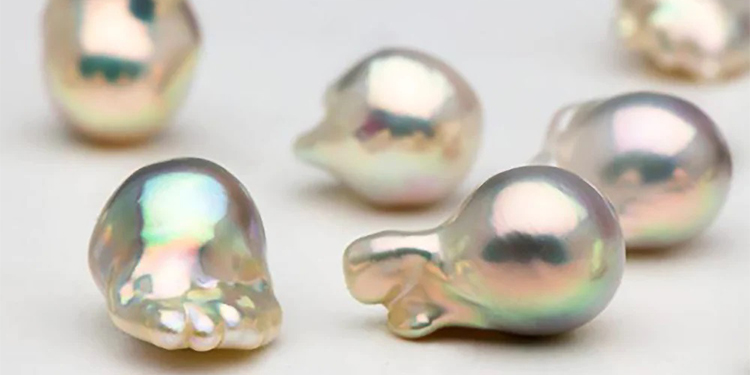
The term' Baroque' is derived from the Portuguese word 'Barocco,' which means imperfect, coarse, or uneven. As per the famous French dictionary of 1694, 'Baroque' is termed a word to represent the pearls that are imperfectly round. Besides this, the Baroque term was also used between the period around the 17 century to the mid-18th century for elaborate and extravagant ornaments.
Unlike traditional pearls, Baroque pearls are irregularly shaped and come in various shapes and sizes. They are used in making different jewelry pieces like baroque pearl necklaces, bracelets, rings, pendants, baroque pearl earrings, and much more. These pearls are found in saltwater and fresh water, mostly in the South Sea, Tahiti, Japan, and China.
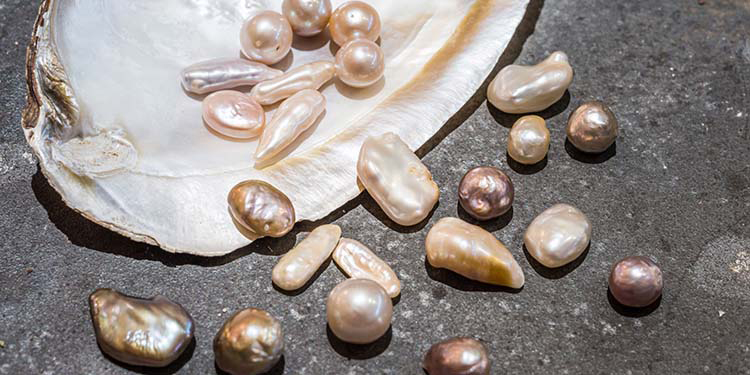
The pearl formation Barbeque pearls of quite extraordinary and fascinating! The standard pearl formation process does not always occur in the soft tissue. Sometimes, the pearl cysts get jammed in the muscular tissue of the oyster. When this happens, the pearl faces resistance from the muscular tissue during its development. Due to this continuous resistive force, the pearl acquires a unique and irregular shape instead of the round shape of classic pearls.
Baroque Freshwater pearls VS Seawater Pearls

While saltwater pearls are produced by oysters that dwell in seawater, Freshwater pearls are produced inside Freshwater mussels. Given their greater difficulty growing, saltwater pearls are typically more expensive than Freshwater pearls. Let's discover a few additional differences:
More than 90% of Freshwater pearls are Baroque ones. Therefore, perfectly round pearls are more costly due to their rarity. Due to the abundance of Barbeque Pearls more than usual pearls, they are quite easy to find, and they come at affordable cost. Freshwater pearls are typically white, off-white, or cream and have thicker nacre than saltwater pearls.
Talking about saltwater pearls are pearls produced in a saline environment by a saltwater mollusk. Cultured saltwater Akoya pearls, Tahitian pearls, and South Sea pearls are the three most popular forms of saltwater pearls. They are also available in several colors, including blue, green, black, and pink, and have shapes like round and drop and are more lustrous and shiny.
Freshwater pearls are less durable than saltwater pearls. Therefore they might not be the best option for daily wear. But both are a great choice for makers who want to add distinctive pops of color to their jewelry creations, as well as for inexpensive pearl jewelry gifts.
Why choose baroque pearls?
Yes, baroque pearls don't meet the usual standards to make them accessory-worthy. Still, they are the most adorned jewelry pieces in the fashion industry, and there are reasons for that. The following reasons explain what makes them a great option above baroque pearls:
Unusual Shapes

Which earlier were considered a disadvantage for baroque pearls; the same reason making them the most beloved pearls on the planet is their unusual shapes.
Their unique and unusual shapes make each 2 pearls different and give them their unique identity and, simultaneously, the most natural look. As the fashion industry expands its boundaries and appreciates self-expression, the baroque pearls are gaining more attention.
Self-Expression
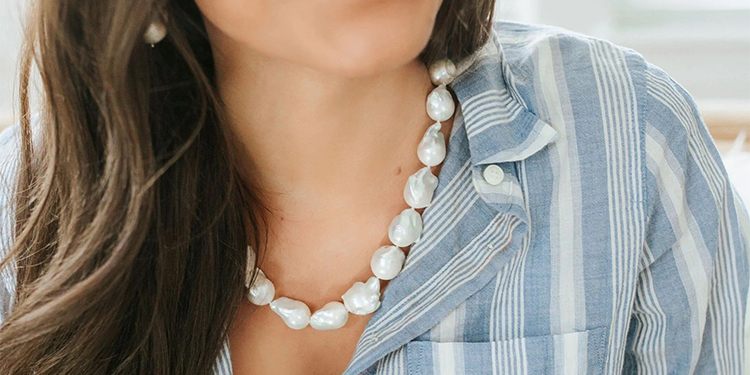
Baroque pearls are distinctive and give the wearer a non-traditional way of exhibiting their taste. Wearing these jewels is a personal experience, even if they are still precious diamonds because of their unique shapes and attraction.
Gorgeous Colors and Luster
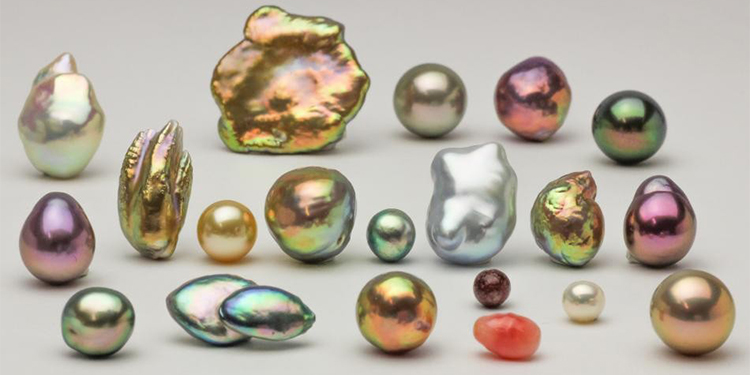
Beautiful overtones that shimmer across the surface of the pearl are notable in baroque pearls. Regardless of the pearl's body color, the irregular shape enhances the color, bringing out gorgeous overtones. Because of their unrivaled overtones, baroque Tahitian pearls are exceptionally beautiful. Some common ones are peacock, aubergine, and steely green.
Furthermore, they are frequently quite lustrous due in part to the ridges and bumps on the surface of the pearl, which interact with light differently than a perfect pearl. Compared to spherical pearls, they have more angles and ridges, which allows light to refract in all directions.
Amazing Cost-Effectiveness
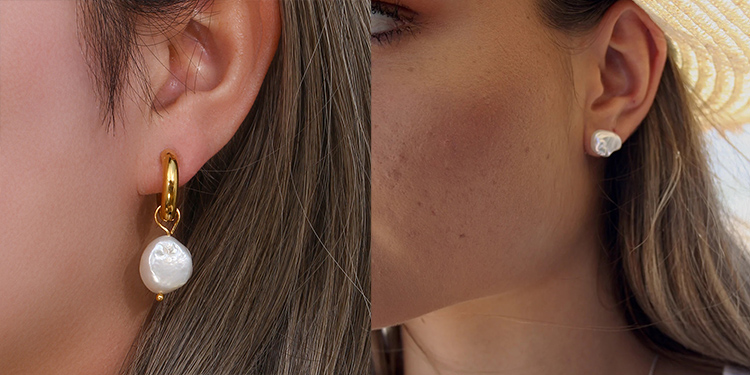
Baroque pearls are still reasonably priced despite their exquisiteness and rarity. A baroque pearl is an ideal choice if you want to own a strand of real pearls without spending an arm and a leg on it because, all other things being equal, it will cost substantially less than a perfectly round pearl.
Types of Baroque Pearls
Baroque pearls come in a variety of variations. To understand how diverse this category truly is, here are a few of the subtypes of baroque pearls.
COIN PEARLS
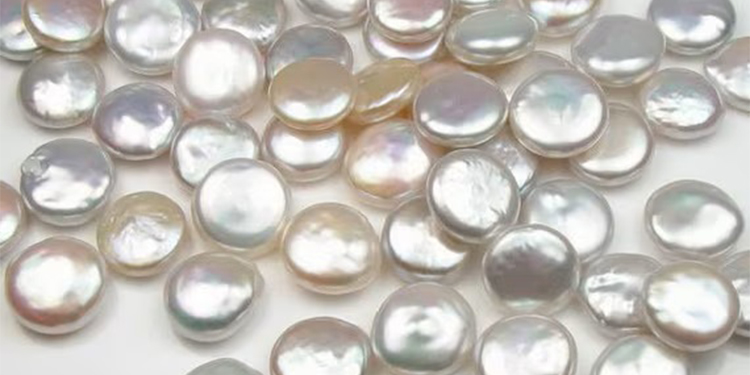
Coin pearls are a subtype of baroque pearls. As they have a significantly greater flat surface than other varieties, they are particularly good at reflecting light. They are highly valued in the jewelry industry because they can be utilized to create stunning pieces like baroque pearl necklaces and baroque pearl earrings.
BAROQUE PEARLS
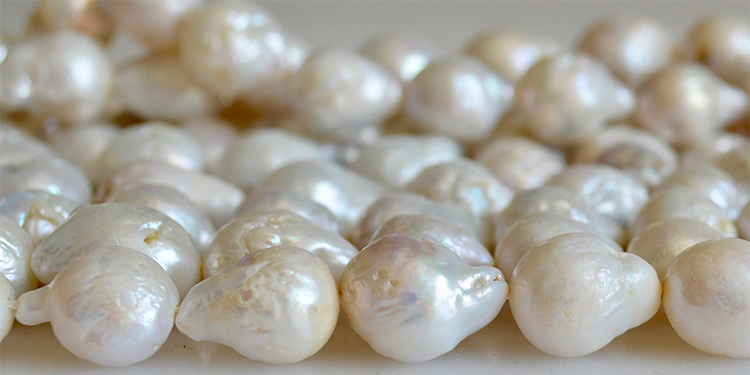
While not the only subtype, baroque is frequently used to describe pearls that are not round; they have an irregular shape and an uneven, dented surface. Victorian and Art Nouveau pieces made extensive use of these pearls.
TWIN PEARLS
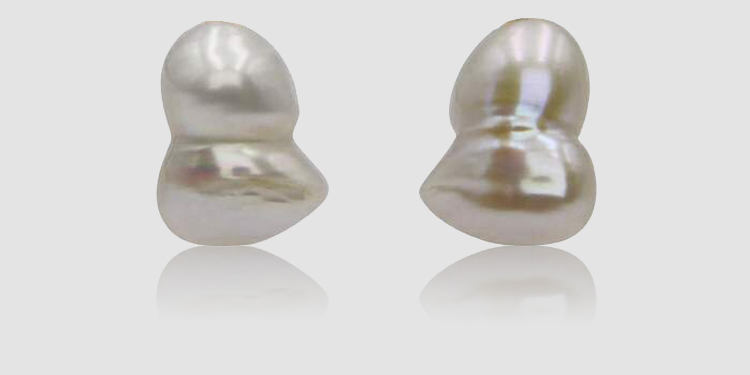
This expression refers to the joining of two pearls. They could be the same shape, or one could be bigger than the other. Their incredibly elegant appearance makes them perfect for baroque pearl stud earrings.
POTATO PEARLS
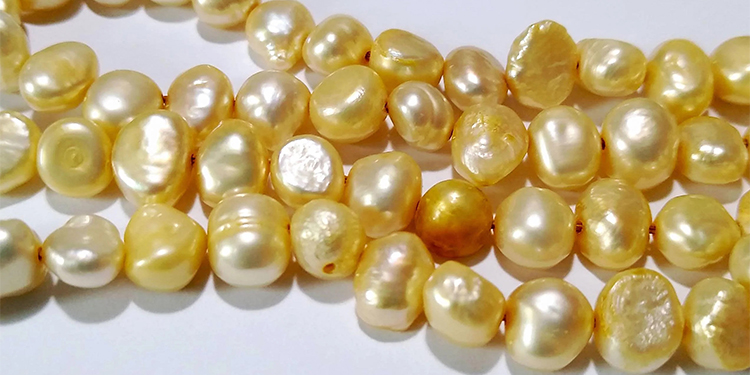
These baroque pearls are the tiniest varieties. They are modest and frequently squarer, rounder, or lumpier than other baroque shapes rather than being extended like other ones. They are perfect for baroque pearl bracelets and necklaces.
CROSS PEARLS
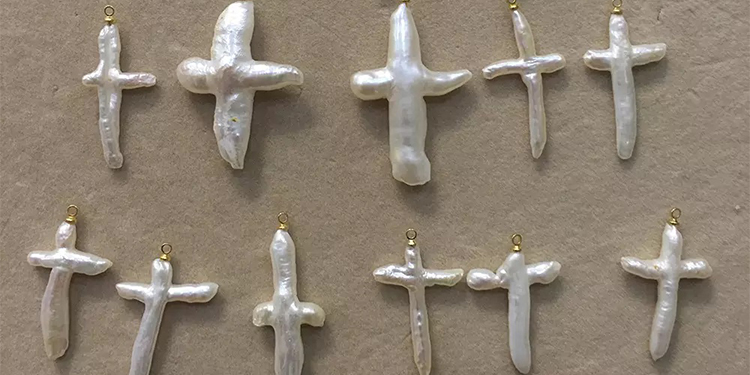
This particular form of baroque pearl is unique. The cross-shaped nature makes them perfect for different jewelry. As a result of their evident religious connotations, they are widely used in religious jewelry.
STICK PEARLS
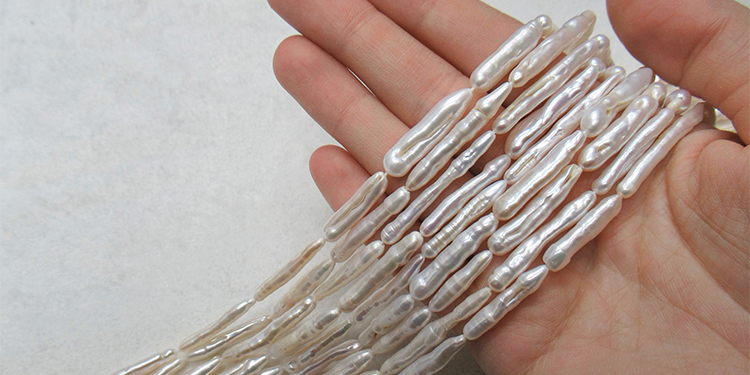
Stick pearls are elongated, flat, and narrow, also known as BIWA. They resemble sticks of varying sizes in shape. Because of their unique shape, they are suitable for usage as statement pieces.
RICE PEARLS

These are tiny baroque pearls with a form that resembles a grain of rice. They are circular and somewhat similar to traditional pearls, yet they are still flawed. They are frequently used for baroque bracelets and necklaces.
HEART PEARLS
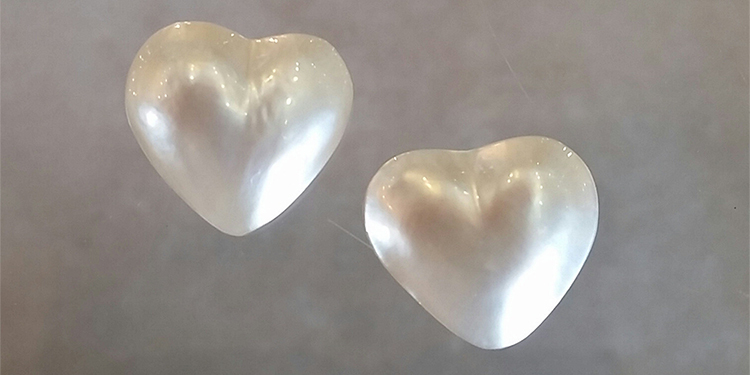
These flat, heart-shaped baroque pearls are similar to coin pearls. They are highly prized in the jewelry industry since they can be utilized to make gorgeous baroque pearl pendants.
KESHI PEARLS
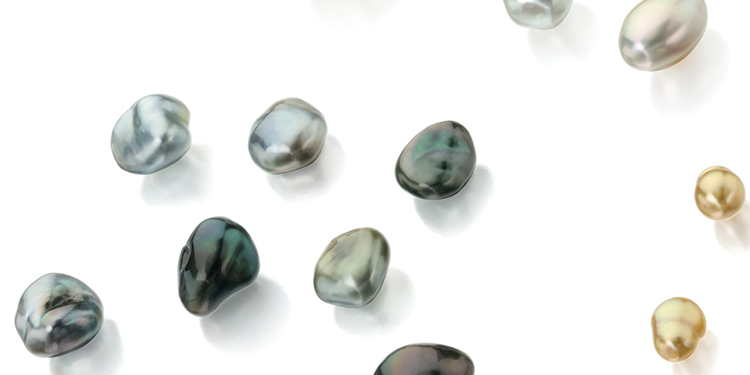
These are the rarest variety of baroque pearls. These pearls have no nucleus and are made entirely of nacre. They come in various shapes, but what differentiates them from other baroque pearls is that they lack a beaded nucleus.
CIRCLE/RINGED PEARLS

These elongated, bumpy pearls have intriguing rings running around them. The rings can range from one to three or more, giving the pearls a unique, almost artificial appearance. They fall into irregular pearls even though they don't quite fit the baroque shape description.
How to choose baroque pearls?
As you can see, baroque pearls are a beautiful, classy, and distinctive choice for pearl jewelry. They are distinct and gorgeous! Selecting the baroque pearls is the most lovely and crucial thing to do as wide varieties are available. You'll be as unique as your new baroque pearl jewelry with it! The setting of the pearl and the jewelry's overall quality should be prioritized while purchasing baroque jewelry. Today's market contains many imitation pearls; therefore, get them from a reputable, reliable store.

Additionally, these pearls are ideal for those who want something distinctive from the standard, so pick one that fits your personality.
Pearls have been around for ages and are a timeless classic. If you adore pearls but want something unique, remember that baroque pearls can be a perfect choice. Baroque pearls are the ideal fusion of classic, spherical pearls with modern expressions of uniqueness. Baroque pearls allow jewelers to push their artistic boundaries and design something original. They give jewelry enthusiasts a chance to wear something totally and fully one-of-a-kind. In contrast to regular pearls, which all seem the same, each baroque pearl is distinct, so you can be sure that what you purchase is unique.
Go And Get One!


Leave a Comment